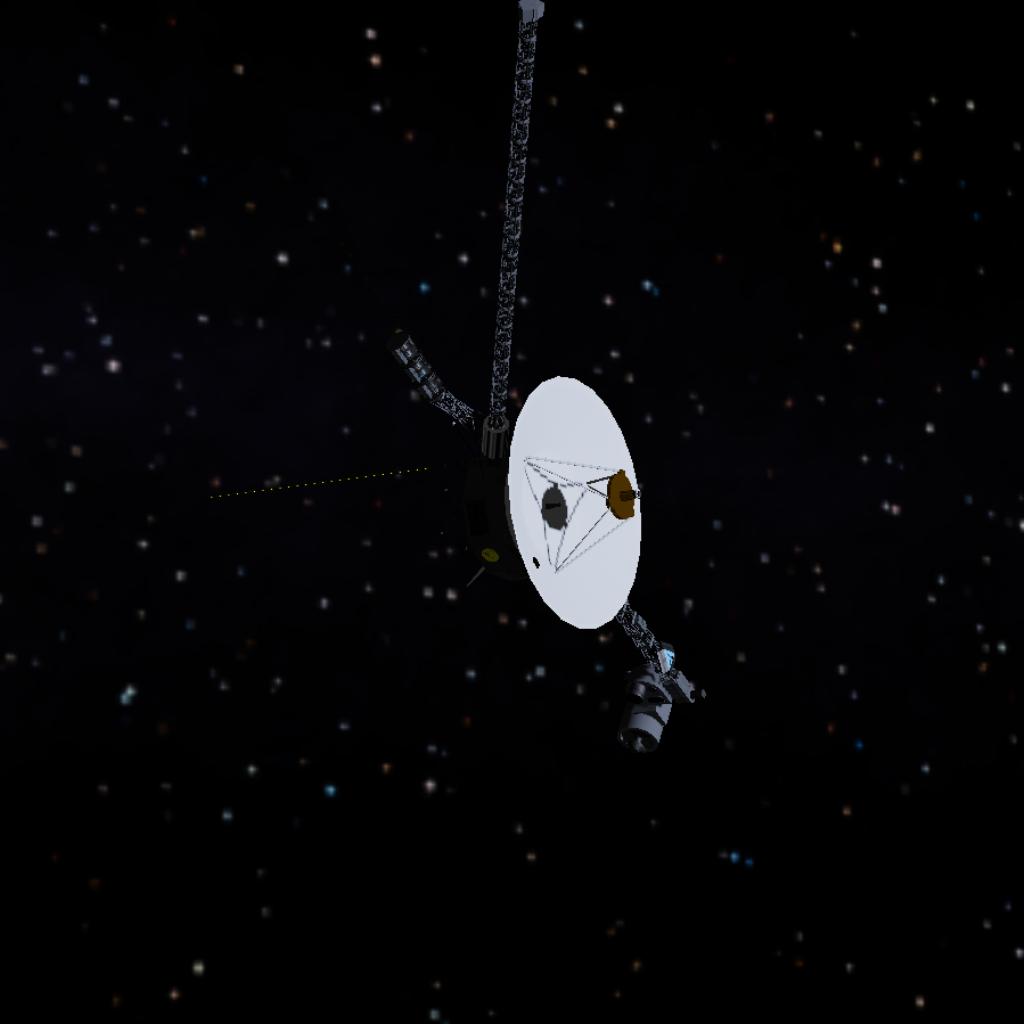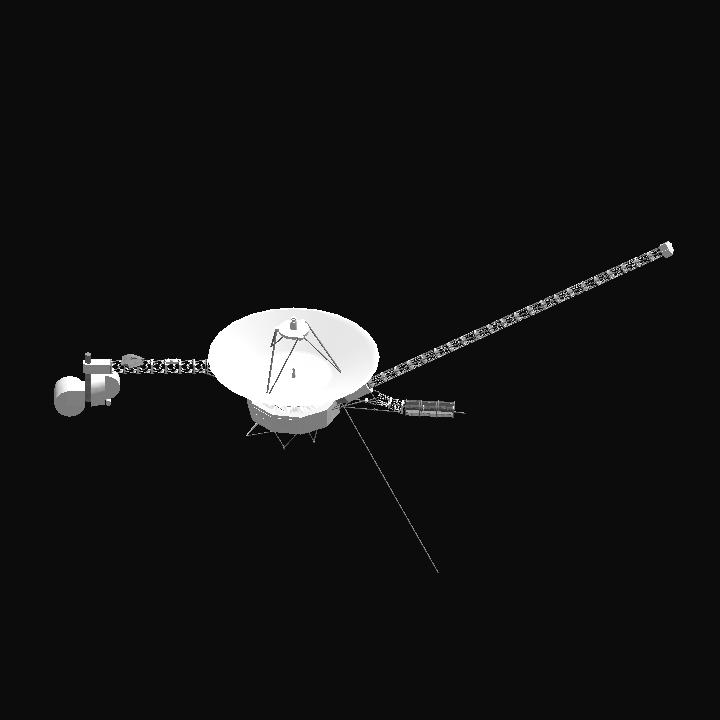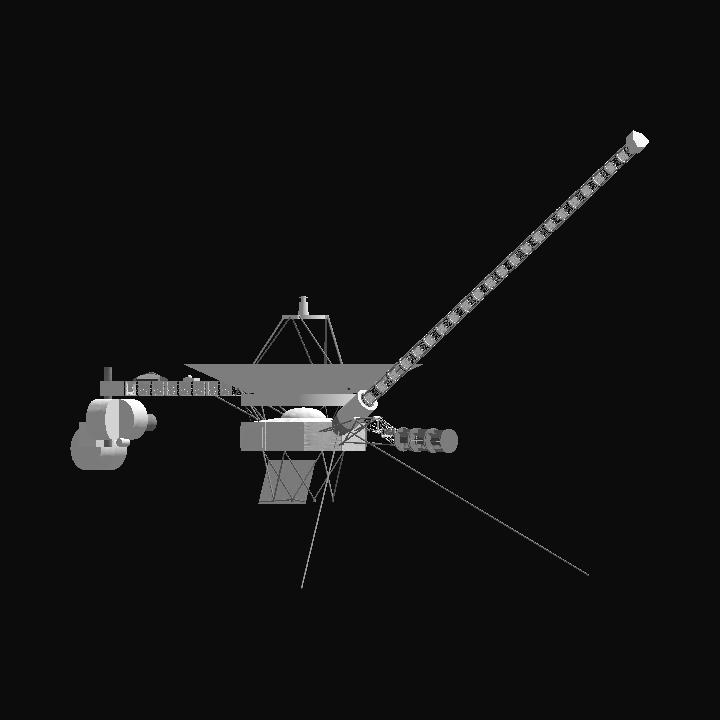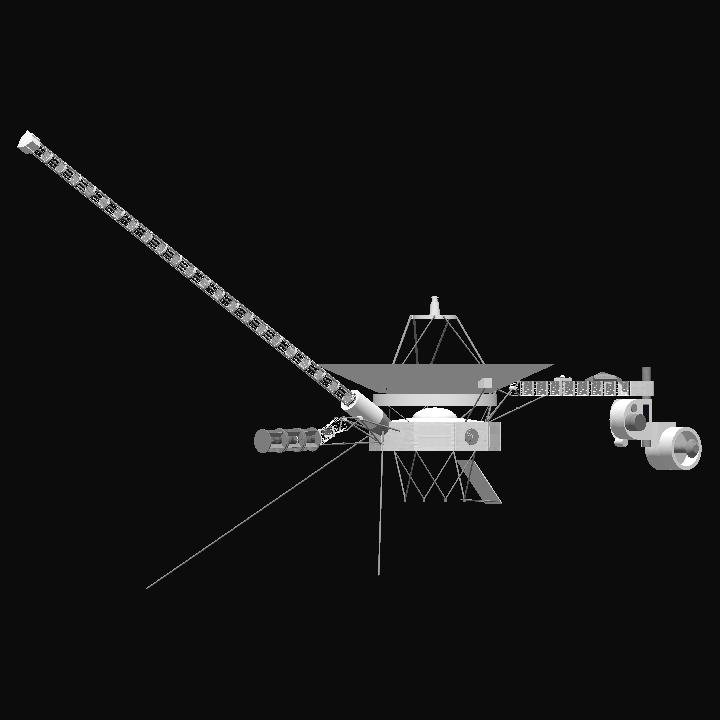Introduction
On September 5, 1977, NASA launched the Voyager 1 spacecraft on a mission to explore the outer planets of the system using the Titan IIIE Centaur rocket. In 1980, after completing its observations of Saturn, Voyager 1 began its journey into the outer reaches of. Although its design mission was only five years, it has remained in good working condition over 30 years of flight. The agency says that Voyager 1 has enough power continue to transmit data back to Earth until around 2020.
Initially designed to study Jupiter, Saturn, Uranus, and Neptune, after its mission in 1989, NASA directed the spacecraft towards the center of the Milky Way galaxy, changing its mission to explore the heliopause and to make particle measurements the solar wind.
The Voyager 1 probe is powered by three radioisotope thermoelectric generators. These generators have far exceeded their original design life and are expected to providing sufficient power for the spacecraft to continue communicating with Earth until around 2020. As of June 14, 2012, the probe was traveling about 17 kilometers per second and was about 18 billion kilometers from Earth.
Task
Voyager 1 Fly over Jupiter
The first images of Jupiter were taken by Voyager 1 in January 1979, about two months after its launch. On March 5 the same year, the spacecraft passed its closest to the planet, at a distance of only 349,000 km from the centre. Because of this close approach the spacecraft was able to make a detailed, high-resolution study of Jupiter's satellites, rings, magnetic field and radiation environment during its 48-hour period of close. The imaging process was completed in April.
Both spacecraft made a number of important discoveries about Jupiter and its satellites, the most surprising being the detection of active volcanism on. This was not at all expected, and had not been observed on Earth at the time, nor by Pioneer 10 or 11.
Fold visit Saturn
Photos of Saturn taken
Having made a successful gravitational assist around Jupiter, the spacecraft headed in the direction of Saturn. Voyager 1 passed by Saturn in November 190, and on November 12 it came within 124,000 kilometers of the top of Saturn's cloud layer. The spacecraft detected the complicated structure Saturn's rings, and made observations of the atmosphere of Saturn's moon Titan. Because of the discovery of Titan's dense atmosphere, controllers at the Jet Propulsion Laboratory to send Voyager 1 in for a closer look at Titan, and with it the mission to visit the other two planets was terminated. The result was that the mission to Uus and Neptune had to be passed on to Voyager 2. This decision to get close to Titan put an extra gravitational tug on the spacecraft, which eventually caused it leave the plane of the ecliptic, and ended its planetary exploration mission.
Interstellar exploration
After leaving Saturn, Voyager 1 was described by NASA as performing the mission of interplanetary exploration. The power supplies on both Voyager spacecraft are expected last until 2020, which will be enough to operate some of the instruments on board.
Voyager 1 Space Travel Log
Departed from Cape Canaveral Air Force Station in the United States at 12:56 p.m. on September 5 1977, leaving Earth.
In December 1977, it caught up with its twin, Voyager 2, which had left Earth first
In September 1978, it left the asteroid belt.
In March 1979, it made a close "visit" to Jupiter, the aurora on Jupiter's dark side.
In November 1980, it made a close "visit" to Saturn, sending back more than ten color photos.
In 1989, it headed towards the center of the Milky Way.
In December 2012, the Voyager-1 arrived at an unknown new region at the edge of the solar system, which scientists believe is the last barrier it must pass through before finally entering interstellar space.
On March20, 2013, U.S. researchers reported that the Voyager 1 probe had left the solar system, but NASA officials said they could not confirm this These debates indicate that humanity is facing a historic moment when a man-made object will fly out of the solar system.
Gold record
The Voyager 1 spacecraft carried a 12-inch-thick copper disk record with a gold-plated surface and a needle for a phonograph. This means that even a billion years from now, the record's sound quality will still be as good as new. Its contents include greetings recorded 55 human languages and various kinds of music, as well as 115 images on the disk, including pictures of the planets of the solar system, images and explanations human sexual organs, etc., which are intended to express human greetings to "aliens". The 55 human languages include some very rare languages such as the ancientopotamian Akkadian language, as well as four Chinese dialects (Mandarin, Xiamen, Guangdong, Wu). The greeting is:Greetings from the children of the planet Earth (to you)."
The record also includes the following content:
Greetings from then UN Secretary-General Kurtheim.
Greetings from then US President Carter, which reads: "This is a gift from a distant, small world. It carries sounds, science, images, music our thoughts and feelings. We are trying to live through our time, into yours."
The record also includes a 90-minute collection of vocal music, mainly sounds of nature on Earth and 27 world-famous pieces of music, including Chinese Peking Opera and the ancient song "Gao Shan Liu Shui", Moz's "The Magic Flute" and Japanese Shakuhachi.
In addition, a piece of high-purity U238 was also included in the sleeve. Since it is known that its half-life of decay into Pu239 is about 41.7 billion years, the capturing alien life can calculate the launch of the probe according to this.




